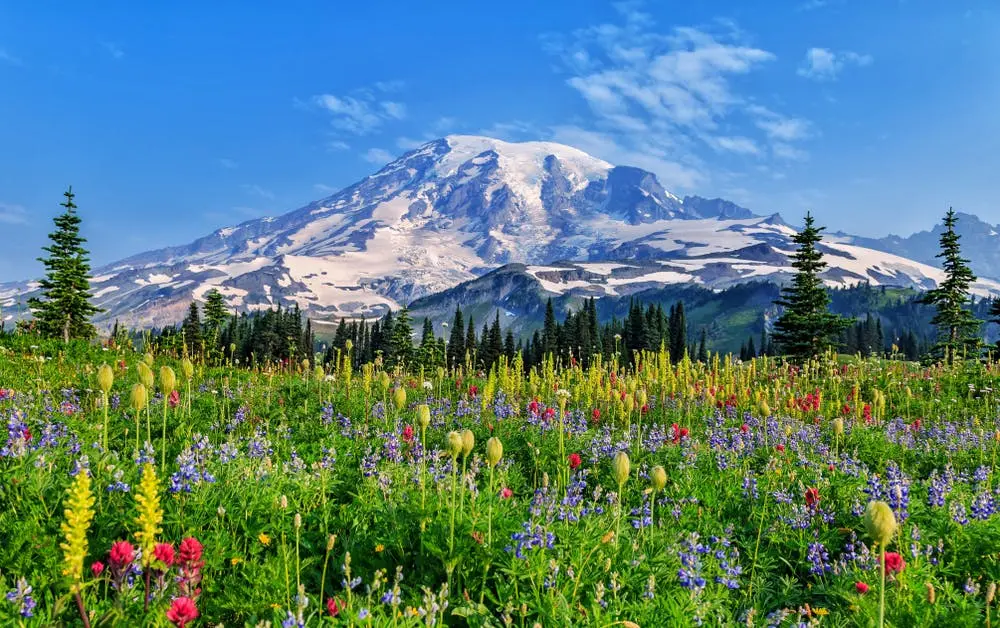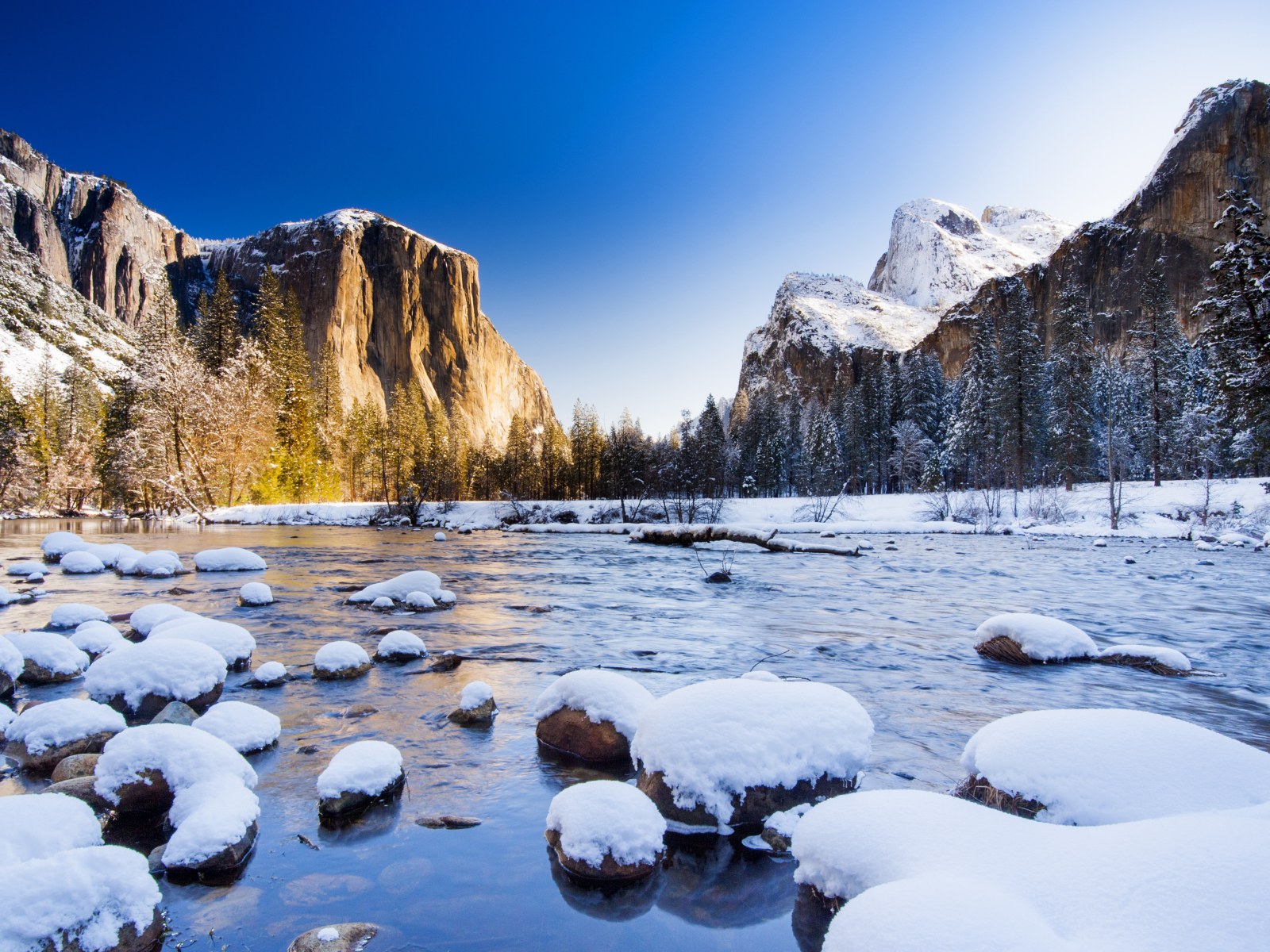A guide to Mount Rainier National Park, Washington State: Secrets for nature lovers
Washington State is a place with a great place to live. Beautiful nature, plenty of outdoor activities, and diverse landscapes make it attractive to residents and those who dream of moving here. Mountains, rivers, forests, lakes, and the ocean await, as well as the opportunity to explore nature in one of the region’s most famous natural areas, Mount Rainier National Park.
Mount Rainier National Park: A unique destination for nature lovers

Mount Rainier National Park is one of Washington State’s premier natural gems, located 90 kilometers southeast of Seattle. The park covers the area around the eponymous Mount Rainier Stratovolcano, which is the highest point of the Cascade Mountains and Washington State with an elevation of 4,392 meters. The park attracts tourists with its alpine meadows, glaciers, dense forests and diverse fauna.
How to get to Mount Rainier National Park
The park is easily accessible by car from Seattle, as the travel time is about 2 hours. The main entrances to the park are on the east (in the Sunrise neighborhood) and south (in the Paradise neighborhood). The park can also be accessed through the less-visited north and west gates.The park has several roads that lead to scenic areas, as well as parking lots and rest areas.
Recommendations for visiting Mount Rainier National Park
Visiting Mount Rainier National Park is an exciting adventure, but to make the trip as comfortable and safe as possible, there are a few recommendations to keep in mind:
1. Plan ahead
- Best time to visit: Summer and early fall (June through September) is the best time to visit, when the trails are dry and the alpine meadows are covered with flowers. In winter, the park is also accessible, but most trails are closed and winter gear will be required.
- Weather Conditions: The weather in Mount Rainier can be changeable, even in the summer. Be sure to check the weather forecast before heading out and be prepared for rain, wind, or even snow at higher elevations.
2. Observe safety rules
- Be prepared for altitude sickness: Paradise and Sunrise are over 1,500 meters and the climbs to the summit are even higher. Drink more water, take rest stops and don’t overdo it if you feel symptoms of altitude sickness.
- Rules for wildlife encounters: The park is home to bears, cougars and other wild animals. Always keep your distance and follow safety rules: do not feed the animals or leave food out in the open.
3. Choosing a trail
- For beginners: Start with short, easy trails such as the meadow walks in Paradise or the forest trails to the waterfalls. The Grove of the Patriarchs trail is ideal for families and exploring the park’s ancient forests.
- For experienced hikers: If you’re up for a more challenging hike, try the Skyline Trail or Wonderland Trail for incredible views of the glaciers and summit.
4. Prepare for the hike
- Clothing: Dress in layered clothing as temperatures can change with altitude. Bring a raincoat and a hat for sun protection.
- Footwear: Be sure to wear comfortable, sturdy hiking shoes, especially if you plan to hike long trails with elevation changes.
- Food and Water: There are no restaurants in the park, so it’s important to bring your own food and water. It’s best to bring a water filter, as natural sources are not always safe.
5. Visit popular places early
Paradise and Sunrise are popular places for tourists and parking lots can fill up quickly, especially on weekends. To avoid crowds and parking problems, plan to arrive early in the morning.
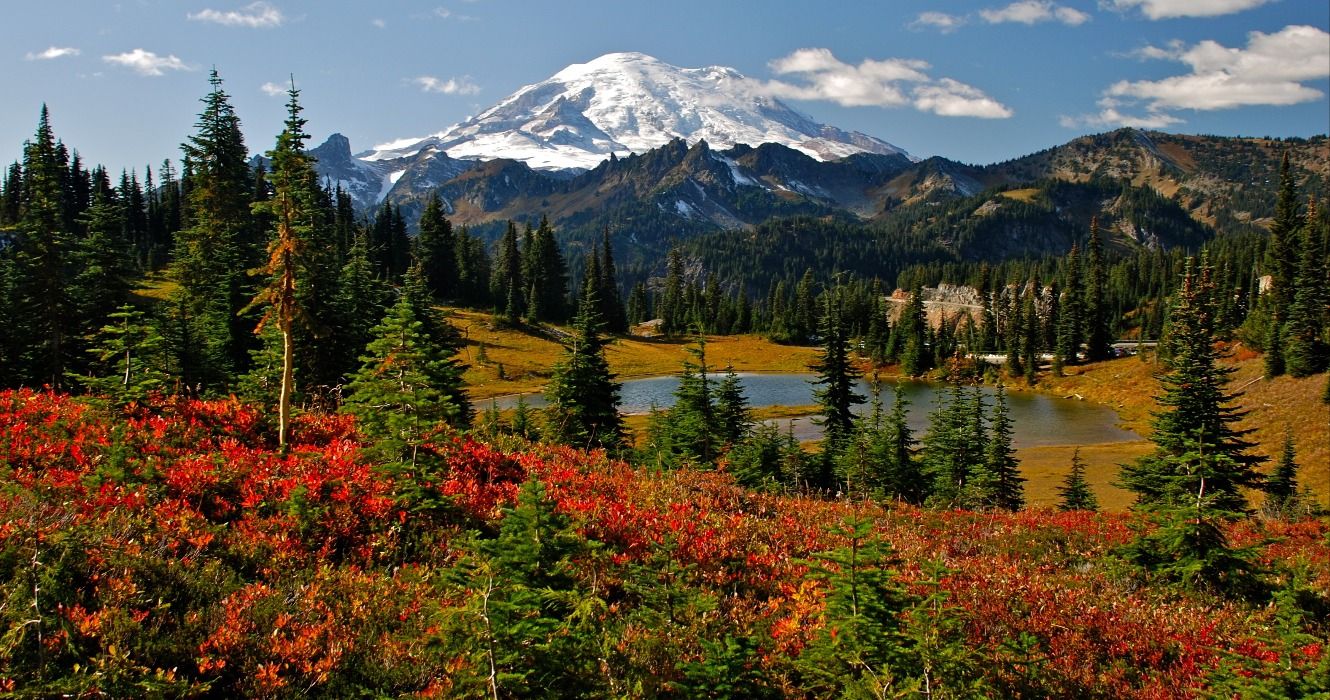
6. Respect nature
- Keep it clean: The park is famous for its unspoiled nature and it is important to leave it as clean as it is. Take all garbage with you, including bio-waste.
- Do not touch flowers and plants: Alpine meadows are very fragile and it is best to avoid trampling the paths outside the official routes.
7. Get more information at the visitor centers
Before starting your trip, stop by one of the visitor centers such as the Henry M. Jackson Visitor Center in Paradise or Sunrise Visitor Center. There you can get up-to-date information on weather, trail conditions, and safety.
8. Beware of avalanches and glaciers
If you’re visiting the park in winter or early spring, be especially careful in areas with the potential for avalanches. It can also be dangerous on trails near glaciers due to ice and rock falls.
9. Make reservations in advance
If you’re planning an overnight stay in the park, it’s best to book your campsite or lodging in advance, as they often fill up during the peak tourist season. Cougar Rock and Ohanapecosh campgrounds are popular places to spend the night.
10. Be prepared for road closures
Some roads in the park close during the winter, so be sure to check for up-to-date information on section accessibility before heading out.
Mount Rainier National Park is a true Washington State treasure for nature lovers, hikers, and outdoor enthusiasts. By following these recommendations, you can maximize your enjoyment of this unique place.
Natural areas and attractions
Mount Rainier is surrounded by a variety of natural areas, ranging from alpine meadows with bright colors in the summer season to dense coniferous forests and majestic glaciers. One of the most popular areas of the park is Paradise, which is known for its stunning flower meadows that offer views of the glaciers and volcano.
1. Paradise

Paradise is one of the most popular areas in Mount Rainier National Park, Washington State, known for its scenic views, alpine meadows, and accessibility to hikers. It is located on the south side of Mount Rainier and sits at an elevation of about 1,600 meters above sea level. It is one of the most visited places in the park due to its stunning panoramas, varied hiking trails and rich flora and fauna.
Attractions and features:
- Alpine Meadows: In the summer, Paradise transforms into a riot of colors thanks to a huge variety of wildflowers. The alpine meadows around the zone are adorned with an array of wildflowers including lupines, anemones, Indian paintbrushes and other species.
- Views of Mount Rainier: This zone offers some of the best views of Mount Rainier and its glaciers. The views are especially spectacular at sunset or sunrise.
- Hiking: Paradise offers many trails for hikers of all fitness levels:
Skyline Trail is one of the most popular trails that leads to the top of the meadow with panoramic views of the mountain and glaciers.
Nisqually Vista Trail – a short, family-friendly trail that offers views of the Nisqually Glacier.
Myrtle Falls is another short trail that leads to a beautiful waterfall overlooking the mountain.
- Paradise Inn: The historic inn, built in 1917, offers hikers an overnight stay in the heart of the national park. Paradise Inn is an integral part of the cultural heritage of the place.
- Paradise Jackson Visitor Center: The Visitor Center provides information about the park, here you can learn about trail conditions, weather conditions and pick up a trail map. The center is open year-round and is equipped with all the necessary facilities for hikers.
Best time to visit:
The best time to visit Paradise is during the summer when the alpine meadows are in bloom (July-August). However, the area also attracts visitors in winter, when it offers excellent conditions for snow sports including snowboarding, snowshoeing and skiing.
Getting to Paradise:
The Paradise area is about a 2.5-hour drive southeast of Seattle. The road into the park passes through the town of Ashford, which is near the southern entrance to the park, the Nisqually Entrance. Roads in this area can be closed in the winter due to snowfall, so travelers are advised to check road conditions before visiting.
Paradise is a must-do for anyone who wants to enjoy the natural beauty of Mount Rainier National Park. Whether you are planning a long hike or just want to enjoy the views, this area will provide an unforgettable experience.
2. Sunrise
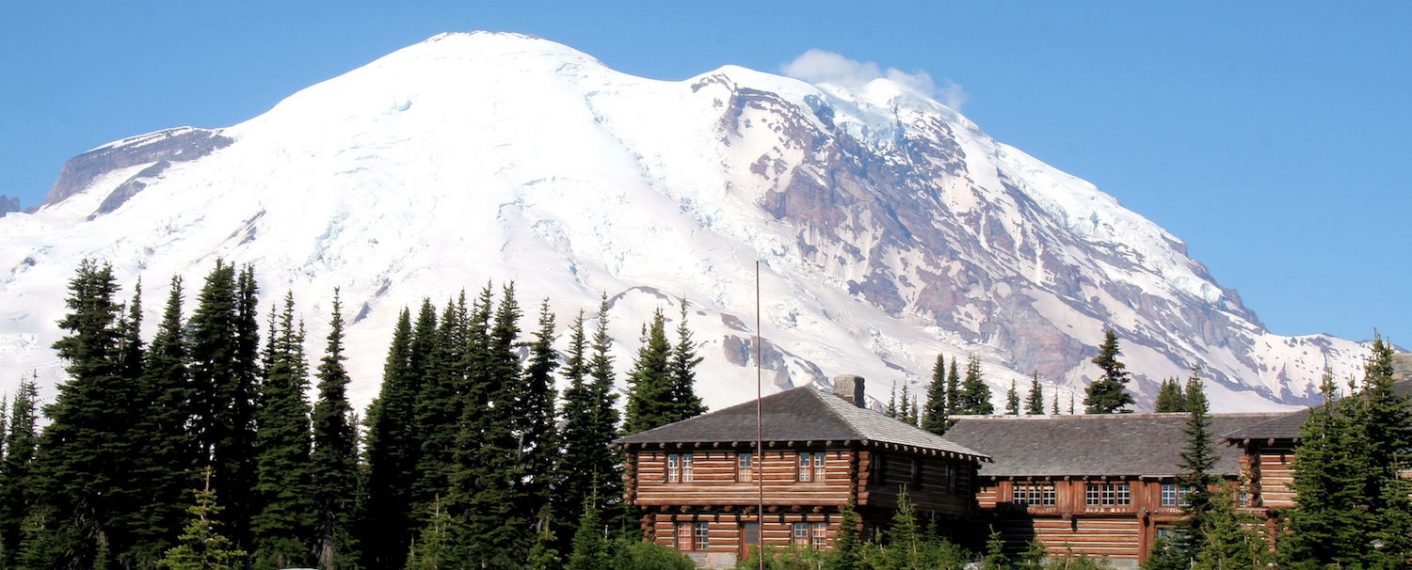
Sunrise is the highest elevation area in Mount Rainier National Park, located about 1,950 meters (6,400 feet) above sea level. This part of the park is on its northeastern side and is known for its stunning views of Mount Rainier, glaciers, and surrounding forests. Sunrise attracts hikers and photographers alike due to its elevation and varied hiking trails that offer unique scenery and wildlife viewing opportunities.
Attractions and Features:
- Panoramic Views: Sunrise offers some of the most breathtaking views of Mount Rainier. At sunrise and sunset, the mountain and surrounding glaciers are illuminated in vivid colors, making it an ideal spot for photography.
- Glaciers and alpine flora: The Sunrise area is surrounded by several large glaciers, including Emmons Glacier, which is the largest glacier. It is also home to a variety of alpine meadows dotted with wildflowers during the summer.
- Hiking Trails:
Sunrise Nature Trail is a short trail about 1.5 miles long that is perfect for families. It leads to stunning views of alpine meadows and glaciers.
Sourdough Ridge Trail – a popular trail with panoramic views of the surrounding mountains and valleys.
Burroughs Mountain Trail is a more challenging trail for experienced hikers. It climbs to peaks with spectacular views of Mount Rainier and Emmons Glacier.
Frozen Lake Loop is a circular trail that offers amazing views of bodies of water and mountain tops.
- Sunrise Visitor Center: The Sunrise Visitor Center is open during the summer season and provides information on trails, weather conditions and safety. Maps, souvenirs, and ranger recommendations can be found here.
- Wildlife: Sunrise offers a variety of wildlife including marmots, deer, mountain goats and many species of birds. The area’s elevation and open spaces make it a great place to observe animals.
Best time to visit:
Summer (late June to mid-September) is the best time to visit Sunrise, as most trails are open at this time and the alpine meadows are covered with wildflowers. In winter, the road to Sunrise is closed due to snowfall and access to this part of the park is limited.
How to get there:
Sunrise is about a 2.5 to 3 hour drive from Seattle. To get to the area, you must drive through the eastern entrance to the park, the White River Entrance, and then take the winding road that climbs up to the Sunrise parking lot. It is important to remember that this road is only open during the summer season, and it is recommended to check road conditions before visiting.
Travel Tips:
- Sunrise is considerably cooler than other parts of the park due to its altitude, so it is worth bringing warm clothing even in summer.
- This is a popular spot and the parking lot can fill up quickly, especially on weekends. It’s best to arrive early in the morning to avoid large crowds.
- The altitude in the Sunrise area can make you feel mountain sickness, so you should move slowly and drink more water.
Sunrise is a unique area of Mount Rainier National Park that will give you unforgettable views of alpine meadows, glaciers and mountain tops. It’s the perfect place for outdoor activities and exploring the natural beauty of Washington State.
3. Glaciers
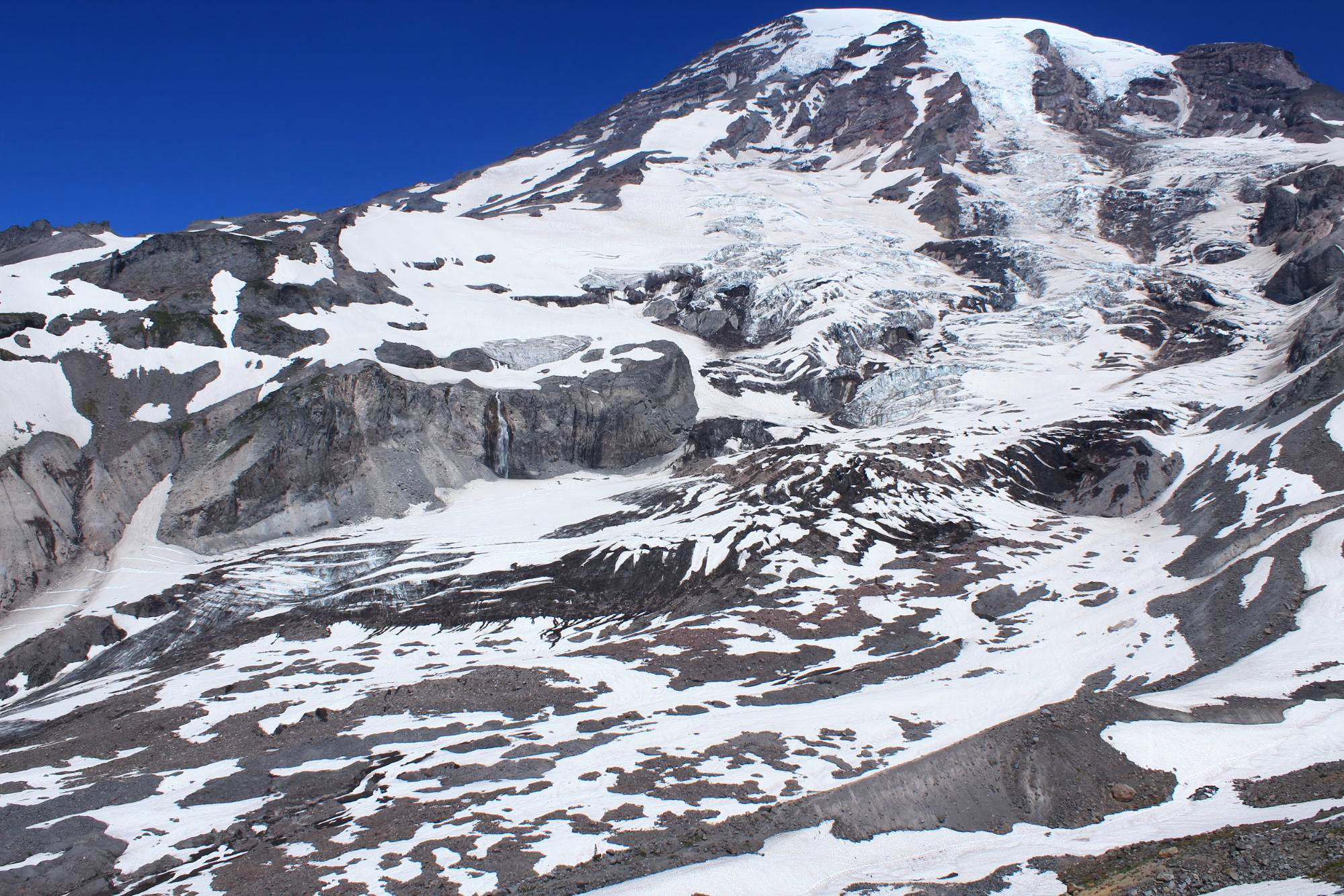
Mount Rainier National Park in Washington State is famous for its majestic glaciers that cover Mount Rainier and create spectacular scenery. The park’s glaciers play an important role in maintaining the region’s ecosystem, providing water for rivers, vegetation, and wildlife. More than 25 glaciers surround the volcano, of which Emmons and Carbon are the best known. They attract climbers and tourists who want to see these majestic formations.
-
Emmons Glacier
This is the largest glacier in the park and the largest glacier in the 48 contiguous states of the United States, covering an area of about 11 km². It is located on the eastern slope of Mt.
Emmons Glacier starts high on the slopes of Mount Rainier and runs down to the White River. It is a popular route for climbers to the top of the mountain, and is also a great sight to see from the vantage point of tourists who visit the Sunrise area.
-
Nisqually Glacier
Nisqually Glacier is located on the southern slope of Mount Rainier and is one of the most accessible glaciers in the park. It is one of the best known glaciers in the Paradise area.
The Nisqually Glacier is clearly visible from the road into the Paradise area and is the subject of scientific research as its retreat has been tracked for many years. The glacier serves as an important water source for the Nisqually River, which supplies water to the region.
-
Carbon Glacier
Carbon Glacier is located on the north side of the mountain and is the lowest-lying glacier, reaching an elevation of only about 1,100 meters above sea level. Because of its low location, Carbon Glacier has the largest ice thickness of any of the Mount Rainier glaciers. The glacier is part of a popular hiking trail leading to a suspension bridge over the Carbon River.
-
Ingraham Glacier
Ingraham Glacier is located on the southeastern slope of Mount Rainier and is used by climbers aiming to reach the summit.
This glacier is part of the standard route for climbing to the summit, so groups of climbers pass through it daily. The glacier is also a site of avalanche activity and can be dangerous to climb during certain seasons.
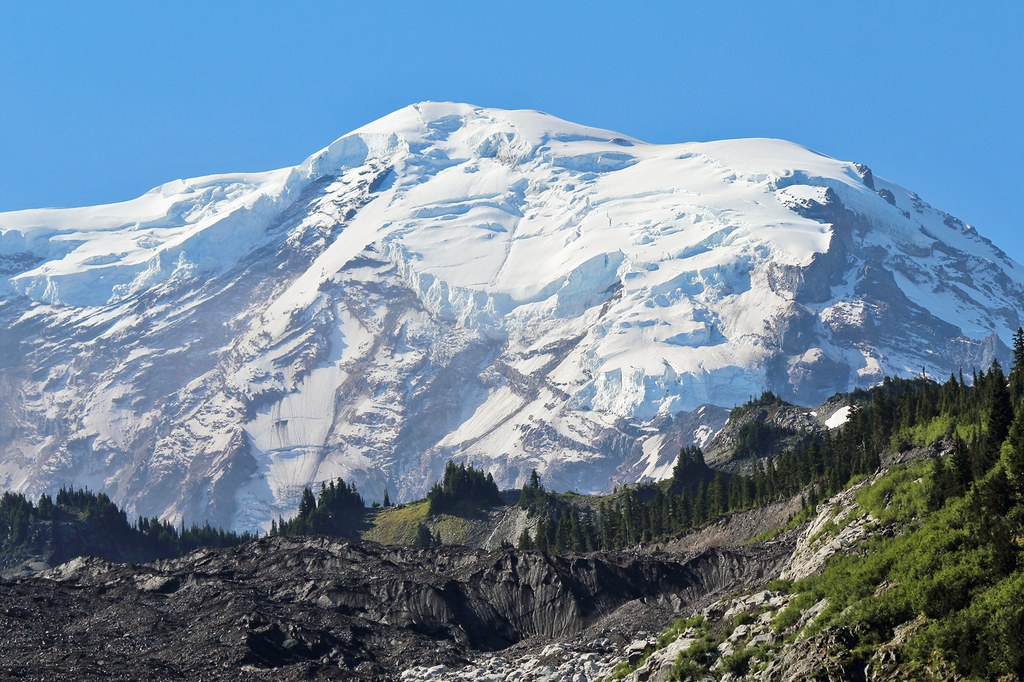
-
Liberty Cap Glacier
This glacier is located on the northwest side of Mount Rainier Peak and is one of the most challenging glaciers for climbers. It begins near the summit of Liberty Cap, one of the highest points on the mountain. The glacier is known for its steep terrain and challenging climbing routes.
Impact of glaciers on the ecosystem
Mount Rainier’s glaciers play a key role in maintaining the park’s ecosystem. They supply rivers with water throughout the year, even during the driest periods. The Nisqually River and other waterways flowing from the glaciers are important sources of water for local flora and fauna, as well as for the agricultural needs and population of the region.
The glaciers also provide unique conditions for a variety of plant and animal species adapted to the cold climate and snowy conditions. Along the glaciers, you can find marmots, goats and other wildlife that inhabit this high-altitude environment.
How to get to and see the glaciers
The most accessible glaciers, such as Emmons and Nisqually, can be seen from the park’s Sunrise and Paradise hiking areas. The trail to Nisqually Glacier starts in the Paradise area and leads to the best points to view the glacier. For mountaineers and experienced hikers, access to glaciers such as Ingraham and Carbon is via challenging trails with overnight stays in mountain camps.
Tips for hikers:
- Preparation: Visiting glaciers requires good fitness as many of the routes are on steep trails with elevation changes.
- Equipment: It is important to bring warm clothing, even in summer, as glaciers create cool conditions. Climbers should be prepared and have the necessary equipment to climb glaciers safely.
- Safety: Glaciers are dangerous sites, prone to avalanches, crevasses and other natural phenomena, so it’s a good idea to follow ranger instructions and stay on marked routes.
The glaciers of Mount Rainier National Park are not only natural wonders, but also objects that give an idea of the scale and power of nature. Tourists who visit these sites will have an unforgettable experience and be inspired by the views that the ice massifs offer.
4. Waterfalls
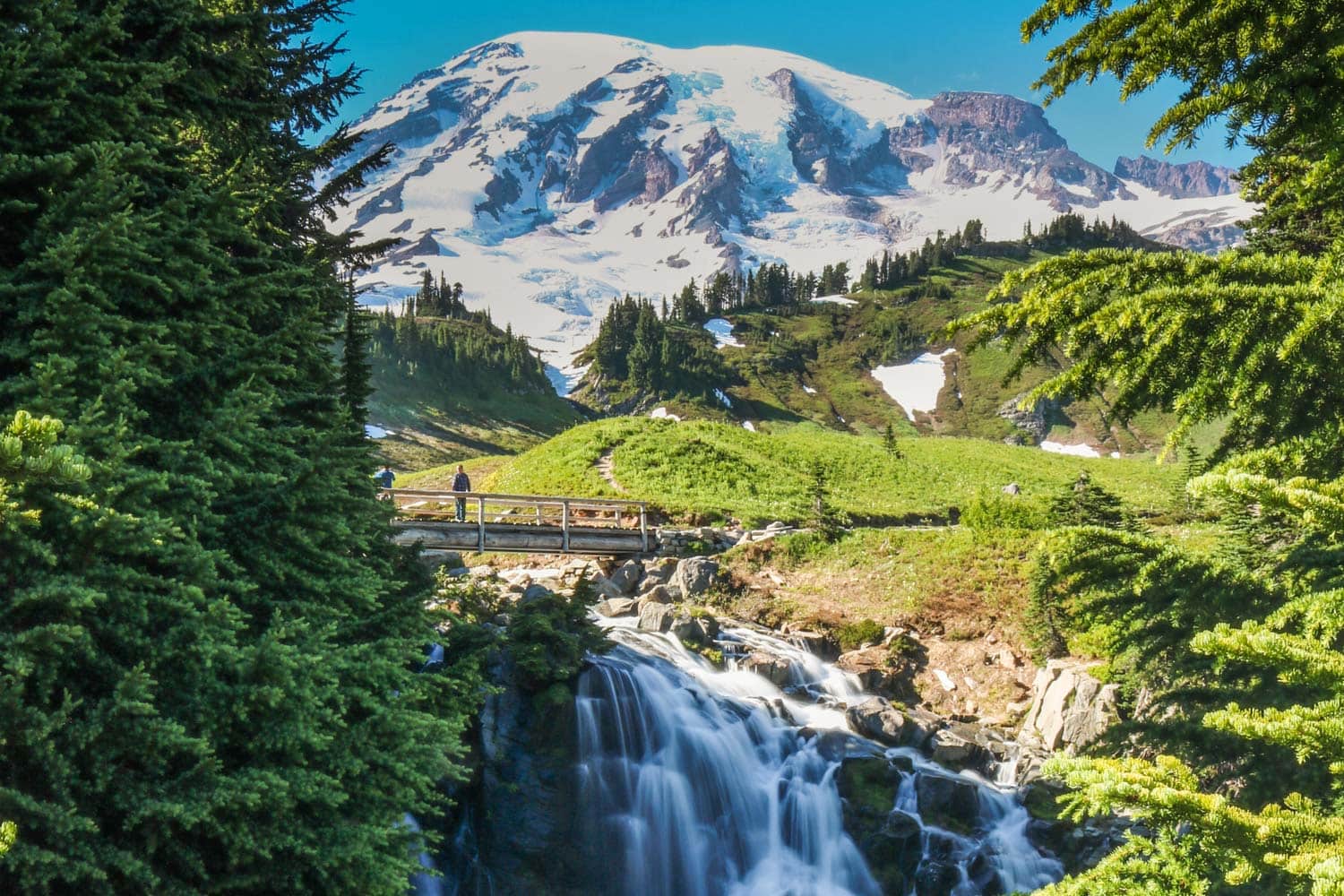
Mount Rainier National Park is famous for its magnificent waterfalls that make it an unforgettable visit. The waterfalls in the park create unique landscapes, attracting tourists with their scenic views and easy accessibility.
-
Narada Falls
One of the most visited and easily accessible waterfalls in the park. It is located near the road to Paradise Mountain and is about 60 meters high. The waterfall has a specially equipped observation deck that offers stunning views of the falling waters. This waterfall is particularly impressive during the spring and summer months, when the river that feeds it is at its fullest.
-
Christine Falls
This waterfall, which is about 21 meters high, is especially beautiful when photographed in a shot with a stone bridge that spans the water flow. Located just off the main road to Paradise, Christine Falls is a short walk away, making it accessible even for families with children.
-
Carter Falls
For those looking for a quieter spot away from the main hiking trails, Carter Falls would be a great choice. It is located in a wooded area and requires a short hike on a trail along the Nisqually River. This trail allows you to enjoy nature away from crowded areas.
-
Silver Falls
Located in the Old Grove neighborhood and popular with hikers who appreciate not only the view, but also the opportunity to enjoy the sounds of falling water. The route to Silver Falls passes through dense forests, making it ideal for family outings.
-
Myrtle Falls
This waterfall is considered the calling card of Mount Rainier. It is located near the Paradise area and offers stunning views of the water falling against the backdrop of Mount Rainier’s snowy peaks. The trail to the falls is short and suitable for hiking with children.
Each of Mount Rainier’s waterfalls offers a unique experience, whether it’s the view of the water cascades from the bridges or the opportunity to hike through scenic forests and alpine meadows. The waterfalls are easily accessible to hikers of all skill levels, making them a must-see when visiting the park.
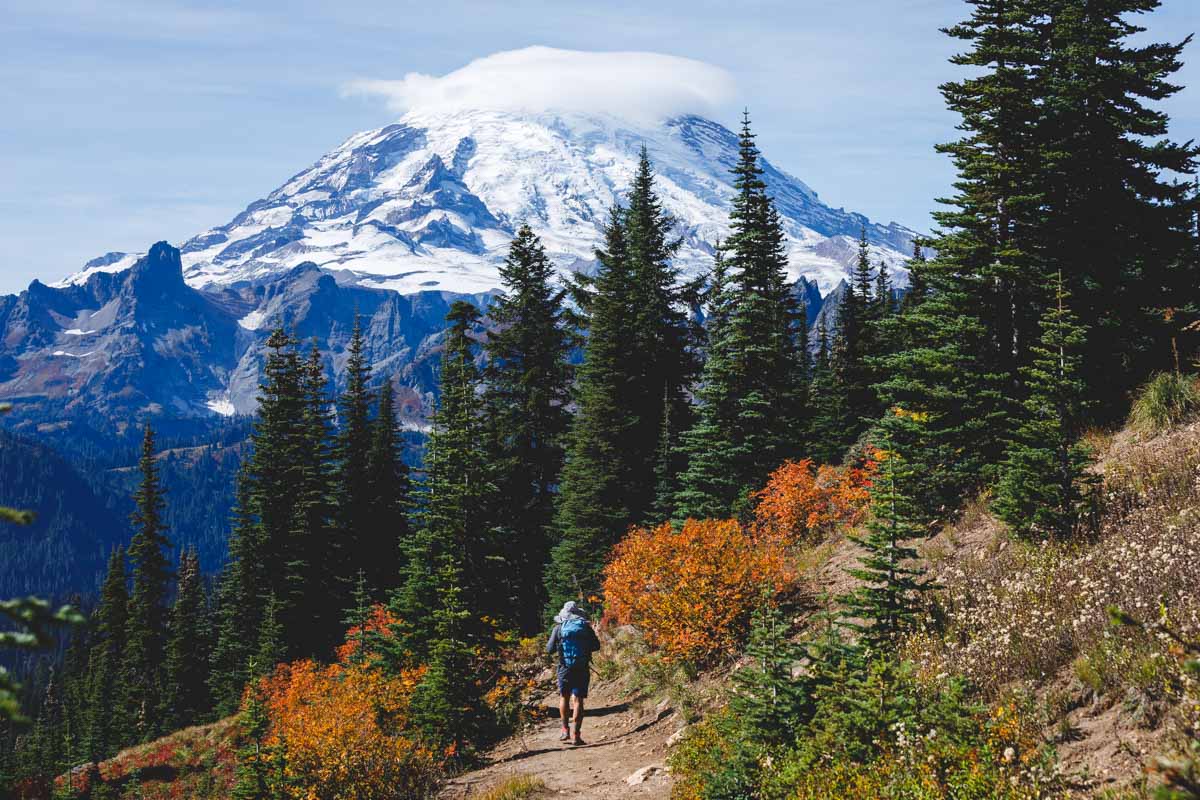
Popular hiking trails
Mount Rainier attracts both easy walkers and experienced hikers. You can choose from trails of varying levels of difficulty:
- Skyline Trail – a famous trail in the Paradise neighborhood with stunning views of glaciers and the summit.
- Wonderland Trail – a 150-kilometer route around the volcano, popular with experienced hikers.
- Grove of the Patriarchs – an easy route through a dense forest of giant trees.
Mountaineering
Mount Rainier is one of the popular mountaineering destinations in the United States. Climbing to the top is considered difficult and requires experience, special equipment and careful preparation. However, for experienced climbers, it is one of the most exciting peaks in North America.
Mount Rainier Flora
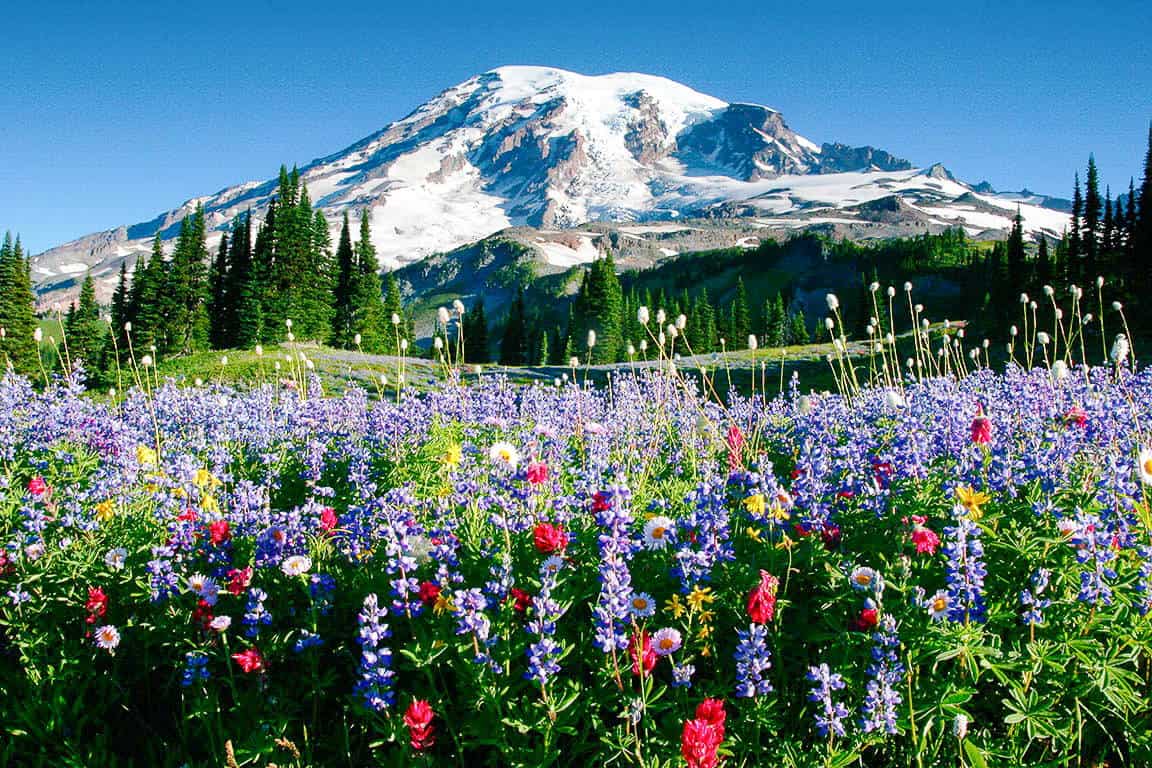
The flora of Mount Rainier National Park is diverse and impressive in its natural features. The park is located in several climatic zones, from lowlands to high mountain peaks, which determines a wide range of vegetation. Here are the main flora elements that can be found in this picturesque corner of Washington State:
-
Forests and conifers
The lower elevations, where the climate is milder, are dominated by dense coniferous forests. Tree species found here include:
Abies procera is one of the most common conifers in the park. These majestic trees can reach heights of over 60 meters.
Thuja plicata – a giant tree, also known as western red cedar, which often forms dense woodlands.
Pinus contorta is a species that is often found in drier and sunnier areas of the park.
-
Alpine meadows
At altitudes between 1,200 and 2,000 meters, where the climate becomes more severe, the vegetation changes to alpine meadows. Here you can see:
Oxalis oregana, a low-growing plant with distinctive three-leaved leaves.
Phyllodoce empetriformis – a plant with small pink flowers that adapts well to harsh conditions.
-
Mountain meadow plants
At altitudes above 2,000 meters, where the climate becomes more brutal, vegetation is limited, but can be found here:
Deschampsia cespitosa – forms dense mats that are resistant to cold conditions.
Saxifraga – small plants that are often found on rocky slopes and in crevices.
-
Flowering plants and shrubs
During the summer season, the park is covered with a variety of flowers including:
Ranunculus eschscholtzianus – bright yellow flowers that are found in alpine meadows.
Castilleja parviflora – this species with bright red or yellow flowers adds color to alpine meadows.
-
Herbaceous and shrubby plants
At lower altitudes, you can often find:
Vaccinium spp. – a shrub with edible berries that are popular with local wildlife and tourists.
Rubus spectabilis, a shrub with bright pink flowers and edible berries.
The flora of Mount Rainier National Park is a harmonious blend of coniferous forests, alpine meadows, and mountain vegetation, making the park a unique place to observe nature. These plant communities not only give the park its distinctive appearance, but also support the ecosystem, providing habitat for many species of wildlife.
Mount Rainier Fauna

Mount Rainier National Park is renowned for its diverse fauna. With its rich flora, diverse landscapes, and wide range of climatic conditions, the park is home to a multitude of animal species. Here’s an overview of the major animal groups that can be found in this scenic area:
-
Mammals
Mountain goat (Oreamnos americanus)
Mountain goats are some of the park’s most distinctive inhabitants. They are known for their long, curved horns and their ability to adapt to the harsh conditions of high mountains. These goats prefer rocky areas and high mountain meadow areas.
Black bear (Ursus americanus)
Black bears are found at different elevations in the park and can range in color from black to brown. They live in forests and grasslands where they find food and shelter.
Grizzly (Ursus arctos)
Grizzlies are less common in the park. They are large and have distinctive fur. They prefer wooded and mountainous areas where they can find plenty of food.
Marmots and gophers
These small rodents live in high mountainous areas. Marmots, for example, live in burrows that they dig in the ground. They live in alpine meadows and on mountain slopes.
-
Birds
White-headed eagle (Haliaeetus leucocephalus)
The white-headed eagle is the national bird of the United States. It is easily recognized by its white head and tail against its dark body. These eagles often nest near bodies of water and tall trees.
Cuckoo Bird (Coccyzus americanus)
The cuckoo bird is known for its distinctive sound and its habit of laying eggs in the nests of other birds. It is found in forest and shrubland areas.
Owl (Bubo virginianus)
One of the largest nocturnal predators in the park, the owl preys on small mammals and birds. It prefers wooded areas where it can find cover and prey.
-
Reptiles and amphibians
Mountain frog (Rana cascadae)
These frogs live in mountain streams and bodies of water. They are distinguished from other species by their bright colors. Predominantly inhabit alpine streams and wet areas.
Fire snake (Thamnophis sirtalis)
Fire snakes are aquatic snakes that can be found in marshy and wet areas of the park. They inhabit areas of high moisture such as streams and lakes.
-
Fish
Salmon (Oncorhynchus spp.)
Salmon, including king and red salmon, migrate from the ocean to freshwater to spawn. They can be found in the park’s rivers and streams, especially where the water is clear and cold.
Features of wildlife observation in Mount Rainier Park:
- Observing: Many of these animals may be encountered while walking in the park, but it is important to remember to be cautious and respectful of their natural habitat.
- Photography: To get the best photos, it is recommended to use long lenses and maintain a safe 0distance from the animals.
The fauna of Mount Rainier National Park attracts many nature and wildlife enthusiasts, offering unique opportunities for observation and exploration.
The appeal of moving to Washington State
Washington State is becoming an increasingly popular place to relocate due to its living and recreational opportunities. Here you will find not only developed infrastructure and a high standard of living, but also amazing nature that will always be close by. By moving to Washington, you will have access to the best conditions for outdoor activities, whether you like mountain hiking, skiing, fishing or just enjoying nature.
Why you should choose our moving company
Our moving company is ready to help you with your move to this amazing region. We will take care of all the hassle of moving, from packing your belongings to delivering them to your new place. You will be able to focus on enjoying the new phase of your life in one of the best states in the United States.
Contact us in any way:
Telephone: (888) 282-6940


